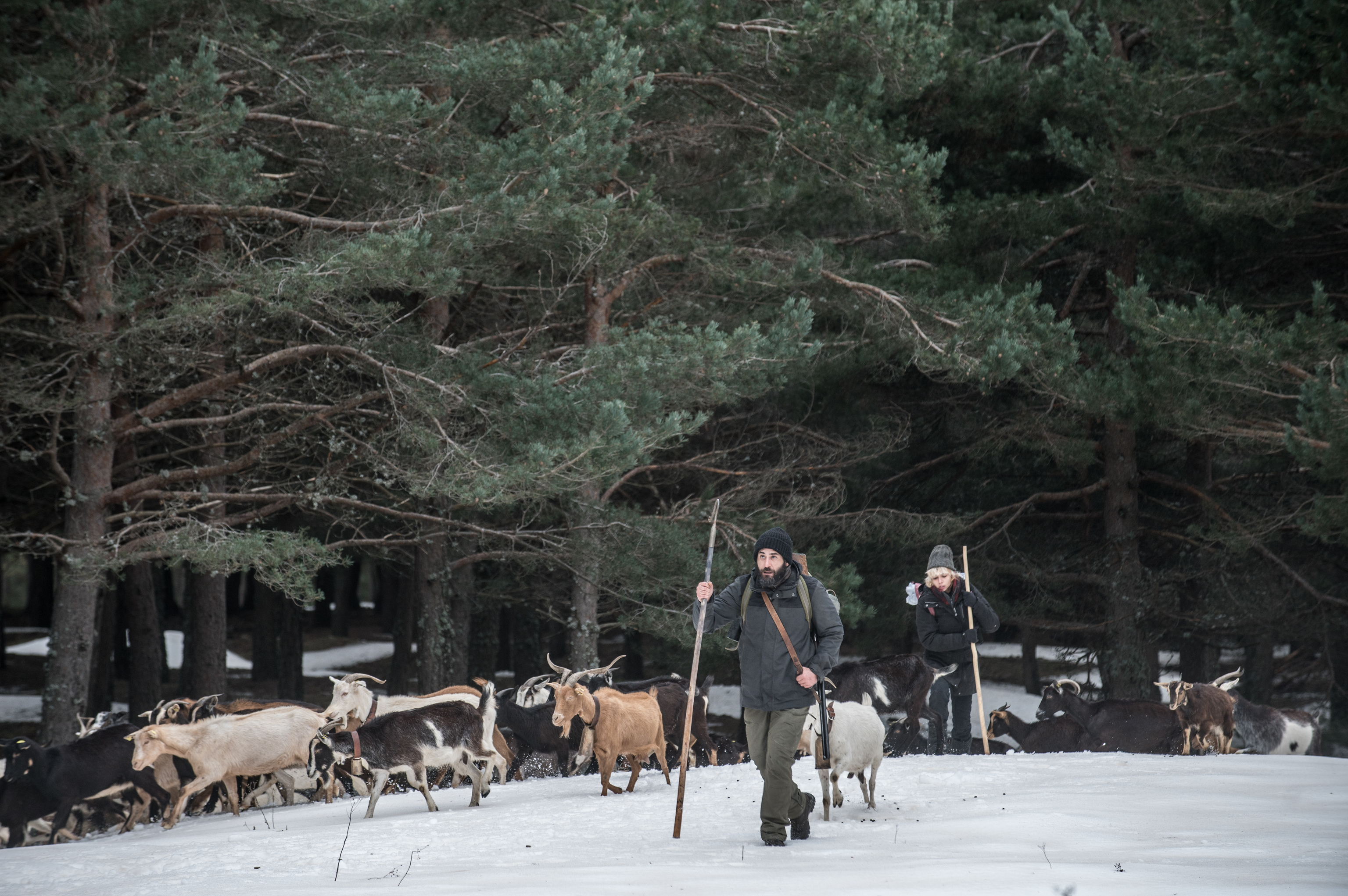If there were a technological and electrical blackout in a week, what would you do?
It is not expected to happen, but put yourself in situation.
Would you still live in the city?
Would you leave your house?
Would you go to the field?
If his option were the latter, the time has come to explain to him that he would have more problems than he is thinking.
Because perhaps he hasn't thought about how he would cope with the cold when he's stuck in a shed in the middle of the mountain.
Or how he doesn't even know how to approach a goat before trying to eat it.
These are all these circumstances that director
Alberto Rodríguez
, winner of three Goya Awards, and his team have faced, who have just finished filming in the mountains of Madrid for the fourth episode of the series Apagón, produced by Buendía Estudios and which later it will premiere MovistarPlus +.
"A survival exercise"
, they explain, which they did not expect to face in a month of March rarefied in terms of climate and which, judging by their faces, has left them little desire to exile themselves to the countryside in the event of a blackout.
“I don't remember so many days of filming with such low temperatures and such bad weather.
But one day we were there, on that mountain [she points her finger up] and
we had to get off the goats because they were at risk of hypothermia.
It's the hardest shoot I've ever done," says Alberto Rodríguez at the La Pinilla ski resort, already in the province of Segovia, where they had to complete a shoot that seemed to have no end.
Until there, where they reached thermal sensations of -16 degrees in the middle of March, they had to move after the snow did not allow them to shoot in Rascafría, in the Madrid area of the Sierra, because the ski resort opened.
«A priori, March was going to be a dry month and we didn't even have an interior cover.
But everything we have recorded tells of nature in its most extreme splendor»
, ironic the executive producers, Rafael Portela and Fran Araujo, with the recordings about to end.
emilio pereda
But a few days ago they were not so happy to move to another autonomous community with a herd of 70 goats that they had to clean up.
Or having to ride a ski lift with frozen hands to get to the set
.
Nor that the hail forced the filming to stop for hours at some point.
Nor looking for a new location in record time to meet the three weeks scheduled to film the chapter that has turned Jesús Carroza into an expert shepherd.
The Sevillian had to spend several weeks in Rascafría with a shepherd, who would end up giving up his flock of 70 heads for filming, rehearsing with the animals.
“I like nature, but I had no idea about goats.
He had to explain to me which goats I had to move so that the others would follow me, how I had to direct them
.
Now I am an expert, I even know how to calm them down and turn them over when I pick them up.
Although in rehearsals without the cameras it was less difficult for them to pay attention to me", relates the protagonist of this story about a rancher who will be threatened by a group of city dwellers, exiled to the countryside in search of food due to the blackout, who want steal his herd.
"There remains the reflection that these people and their goats were not of interest to anyone and when the scarcity arrives everyone begins to care," says screenwriter Rafa Cobos.
Perhaps this sounds familiar to you and has some relationship with the current world in which we live.
«
It is very interesting the survival that living from agriculture or livestock means now, which do not have any social or political focus
.
But that can change”, details Fran Araujo.
emilio pereda
Hence, this story has always been preferred to articulate one of the five chapters that will make up Blackout among more than a dozen ideas that began the process.
«
We should begin to think that if we had to do without certain energy our world would have problems to survive
.
The UN has warned that we are facing the end of the cycle and something new should be opened because the world is ending, "explains Alberto Rodríguez.
That was the feeling he wanted to convey, but he didn't want to deal so directly with bad weather.
“Instead of a series, it felt like we were shooting a survival show.
There was a day when it had hailed so much that everything turned white and we had to start sweeping it and hide it with leaves
so that everything would be the same.
This was a high-risk shoot, the shooting plan had to be changed daily and that was a disaster for the team.
There has been a lot of improvisation and adapting to the circumstances, but I hope it's worth it."
That is the great consolation of all those who make up this technical and artistic team.
«The fear at the beginning was that we could not show the cold well, but we have done that without any problem.
We have had a hard time, but the goal has been met
», highlights Rafael Portela.
So if the blackout occurs and your idea is to jump into the field, think twice.
This is just a shoot, the reality is even worse.
Conforms to The Trust Project criteria
Know more
Segovia

